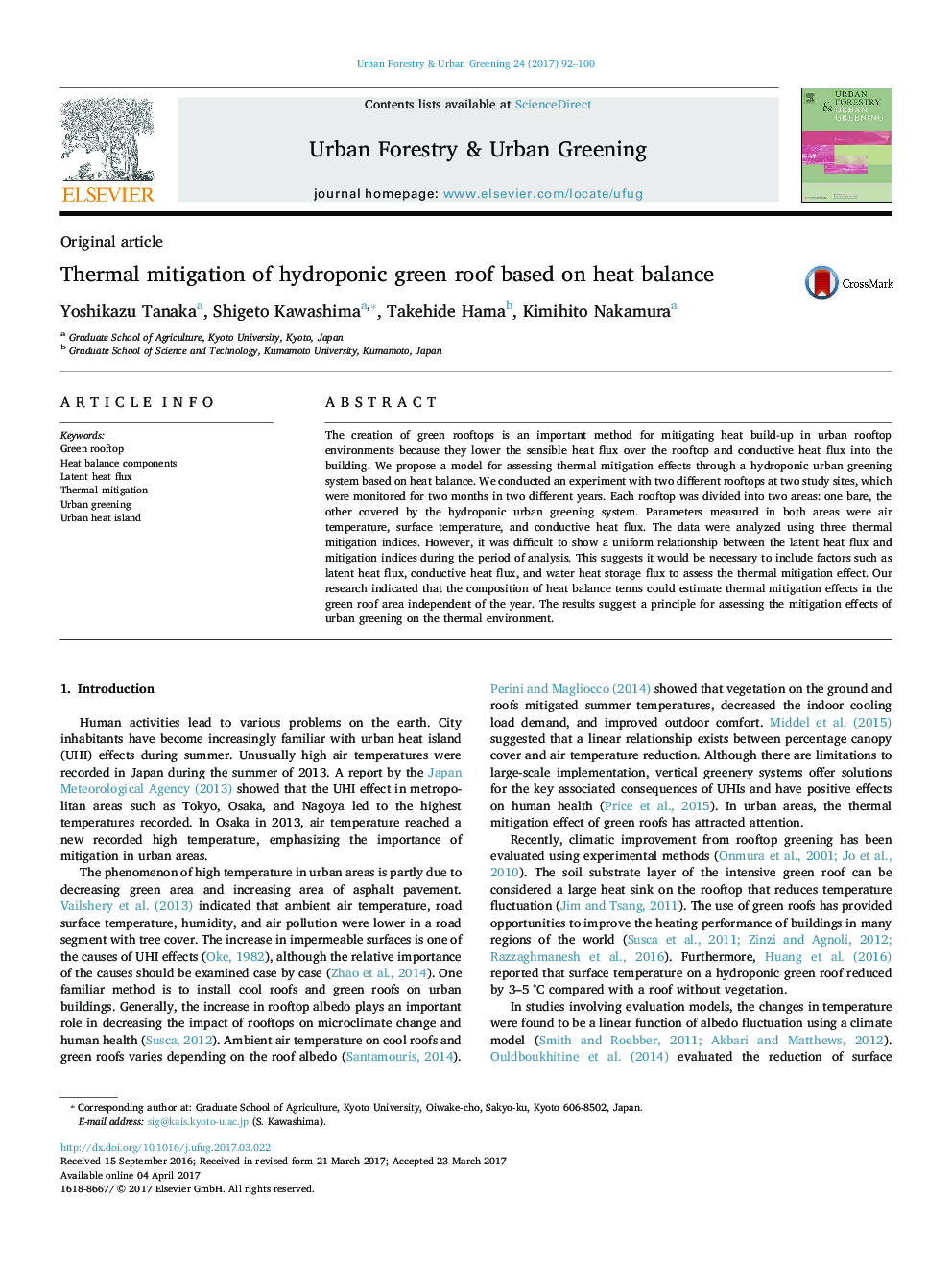| Article ID | Journal | Published Year | Pages | File Type |
|---|---|---|---|---|
| 4760016 | Urban Forestry & Urban Greening | 2017 | 9 Pages |
â¢Thermal mitigation effect by a hydroponic urban greening system was clarified.â¢Mitigation effects were explained by mitigation factors composed of heat balance terms.â¢Latent heat flux was the primary mitigation factor.â¢Water heat storage flux and conductive heat flux were also important terms.â¢Composition of heat balance terms could estimate thermal mitigation effects in green roof area.
The creation of green rooftops is an important method for mitigating heat build-up in urban rooftop environments because they lower the sensible heat flux over the rooftop and conductive heat flux into the building. We propose a model for assessing thermal mitigation effects through a hydroponic urban greening system based on heat balance. We conducted an experiment with two different rooftops at two study sites, which were monitored for two months in two different years. Each rooftop was divided into two areas: one bare, the other covered by the hydroponic urban greening system. Parameters measured in both areas were air temperature, surface temperature, and conductive heat flux. The data were analyzed using three thermal mitigation indices. However, it was difficult to show a uniform relationship between the latent heat flux and mitigation indices during the period of analysis. This suggests it would be necessary to include factors such as latent heat flux, conductive heat flux, and water heat storage flux to assess the thermal mitigation effect. Our research indicated that the composition of heat balance terms could estimate thermal mitigation effects in the green roof area independent of the year. The results suggest a principle for assessing the mitigation effects of urban greening on the thermal environment.
Graphical abstractDownload high-res image (107KB)Download full-size image
